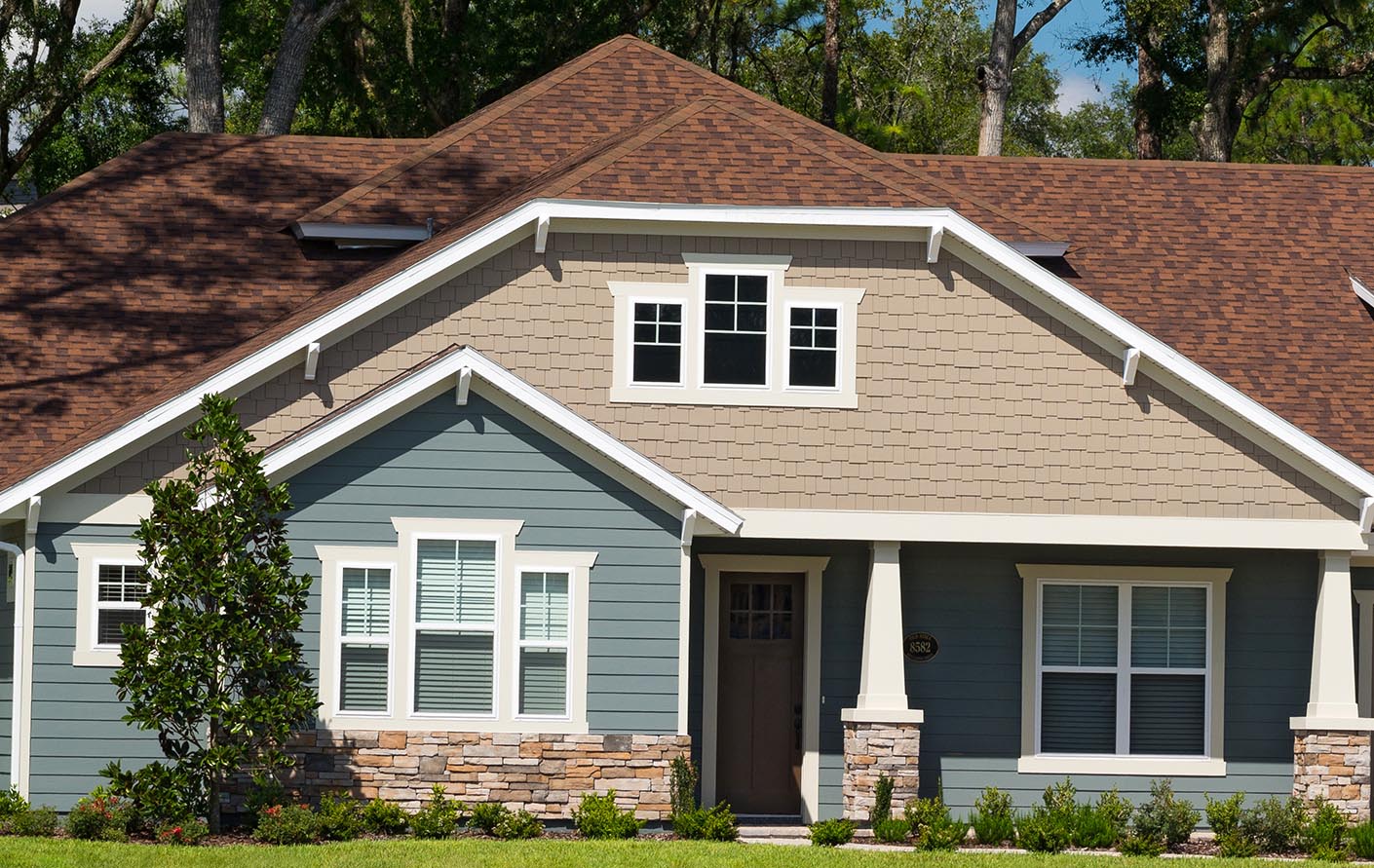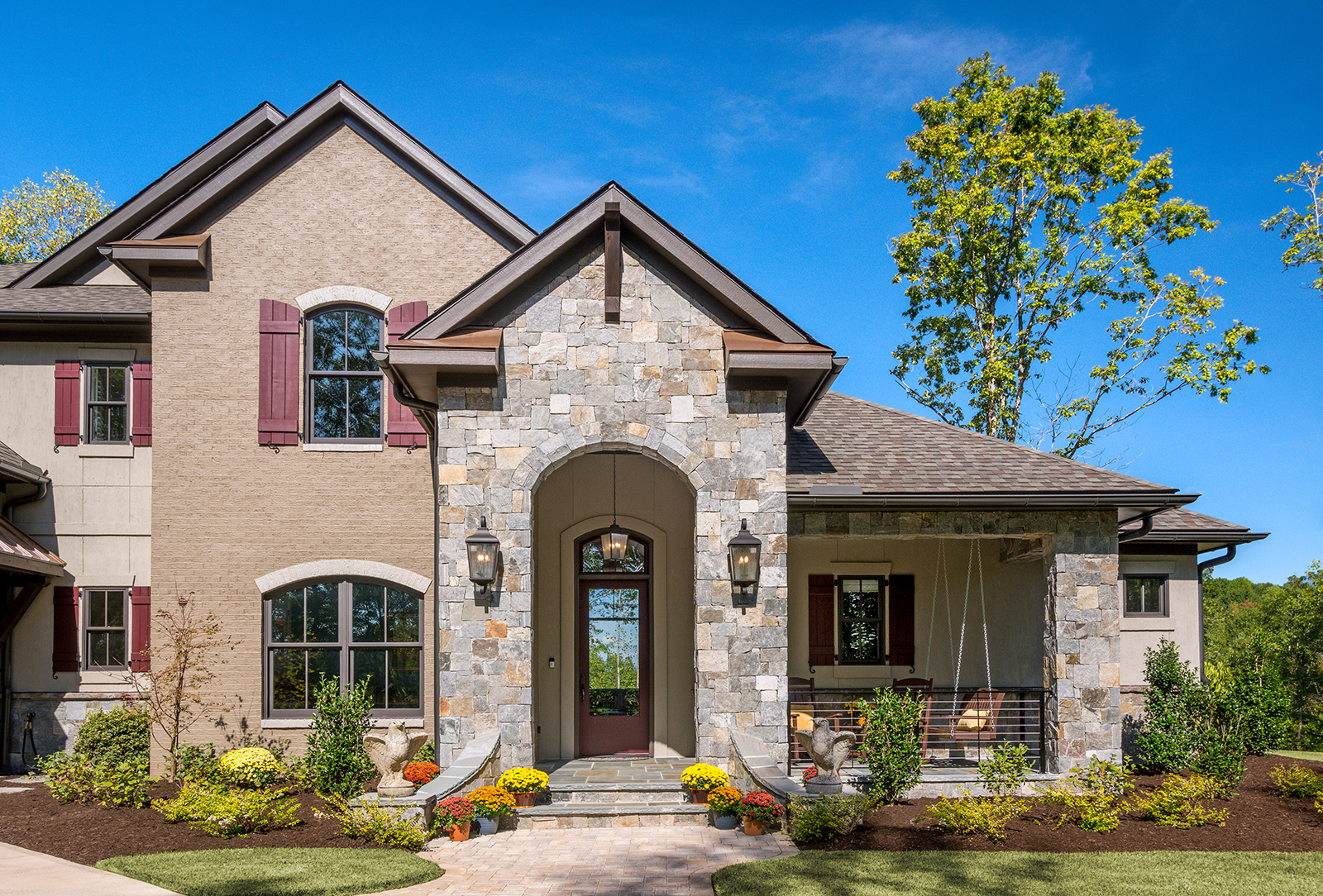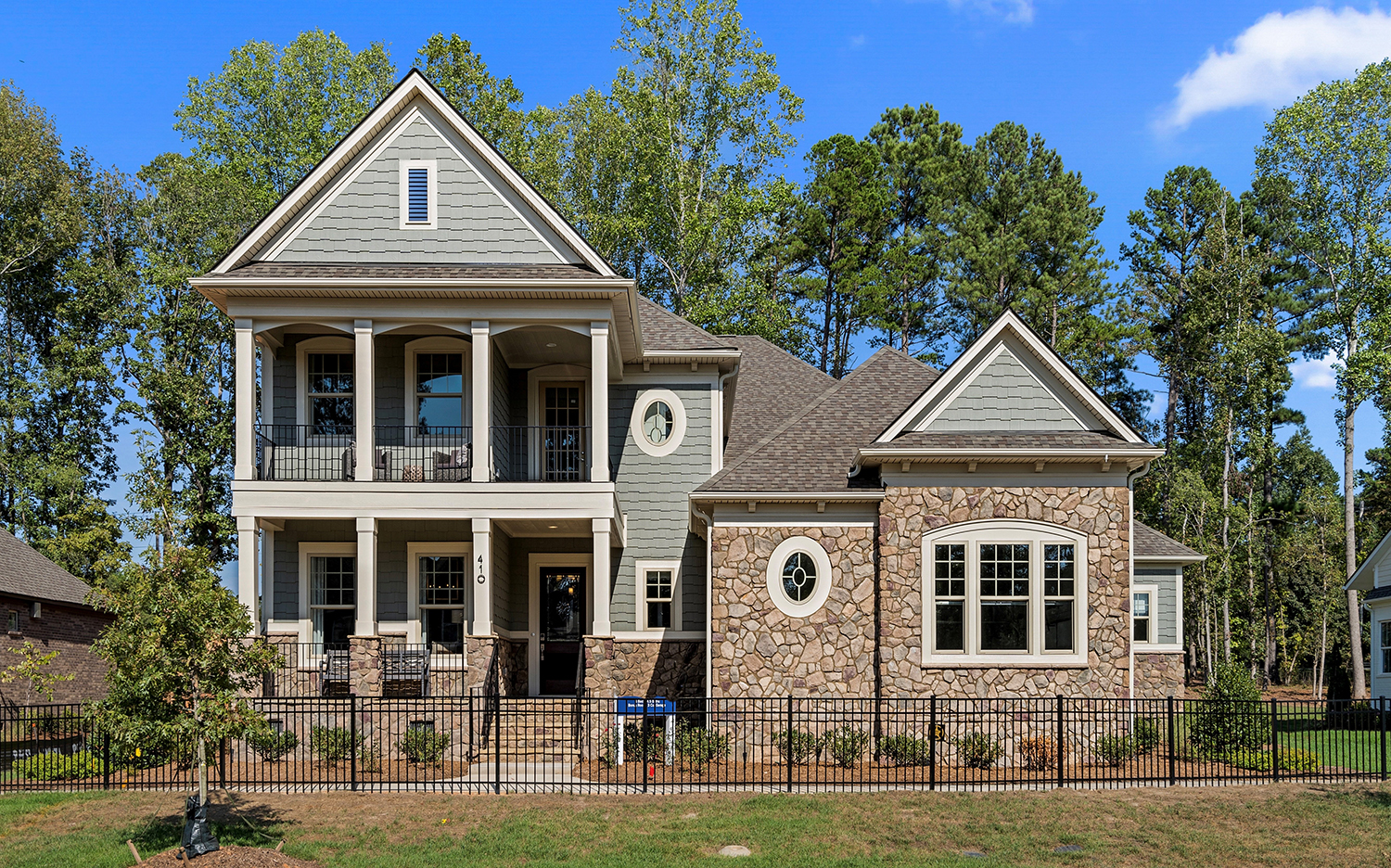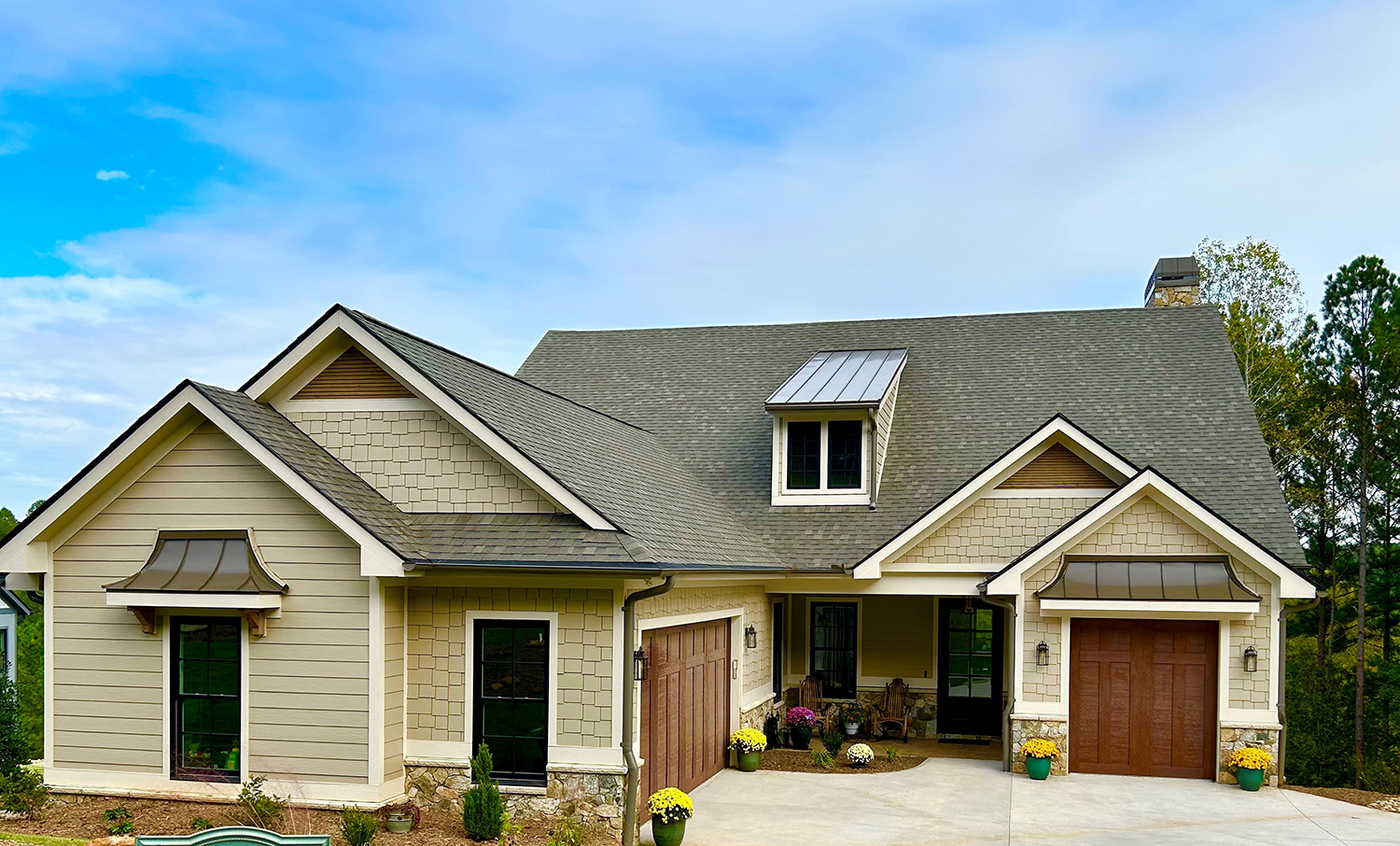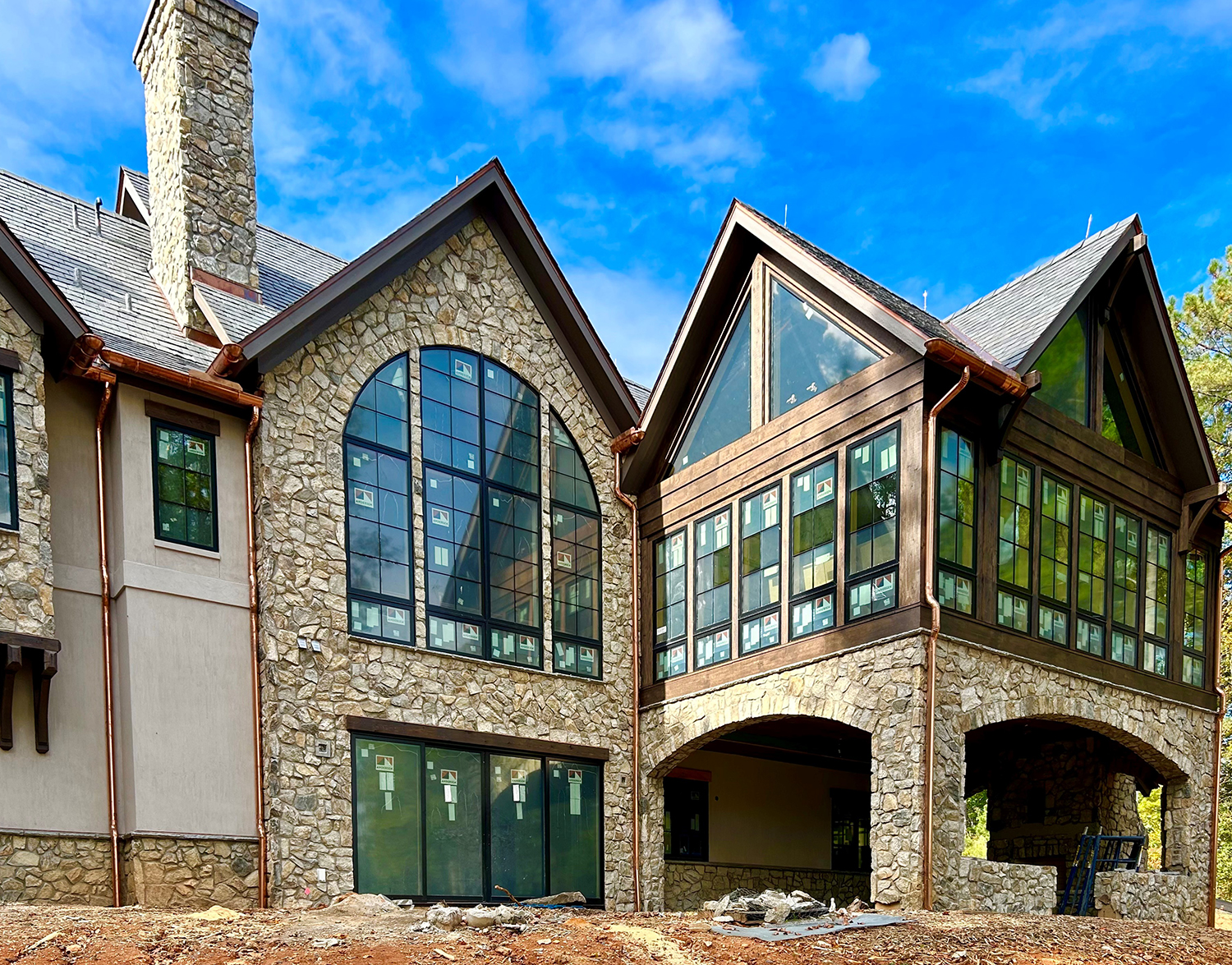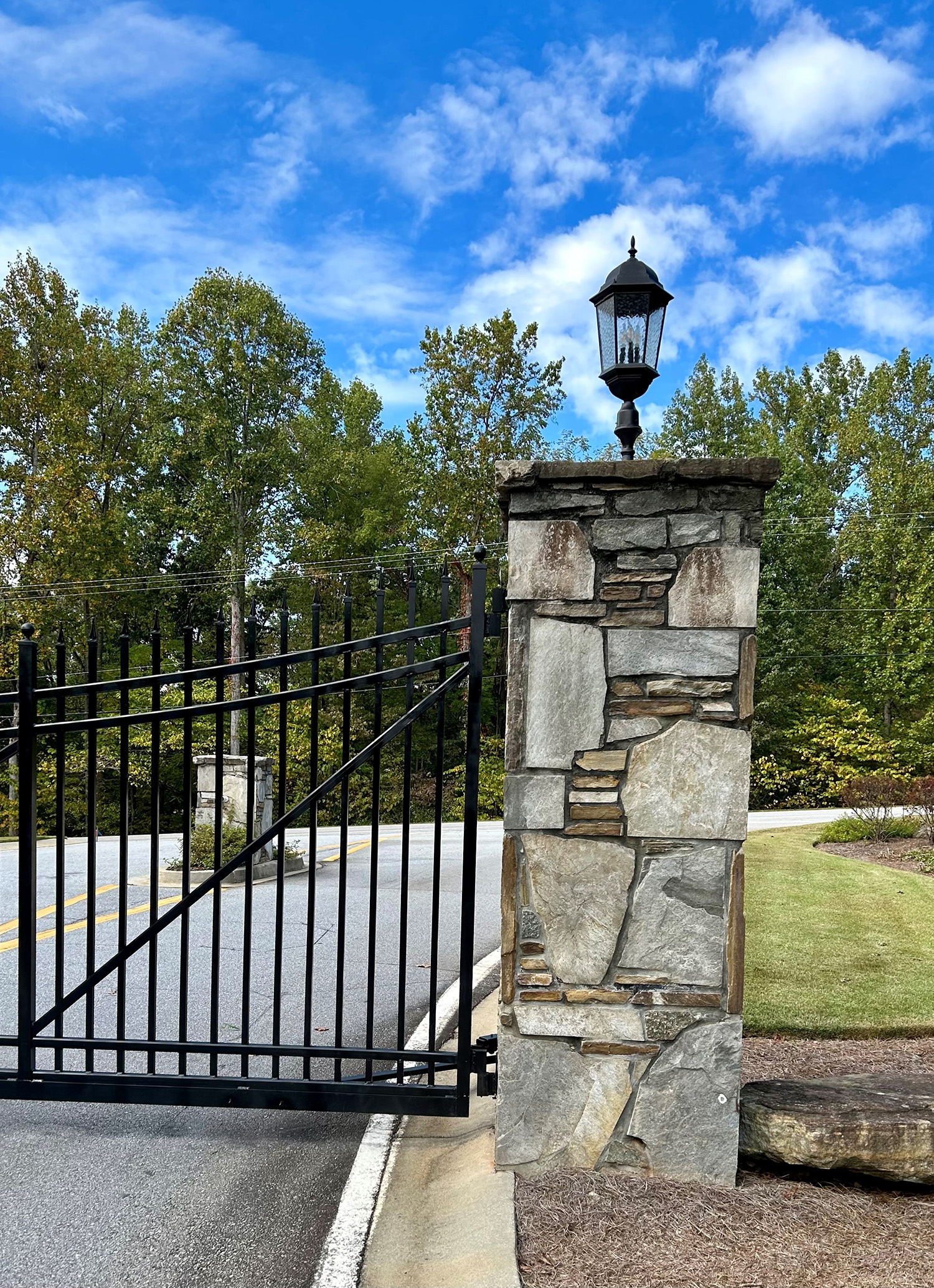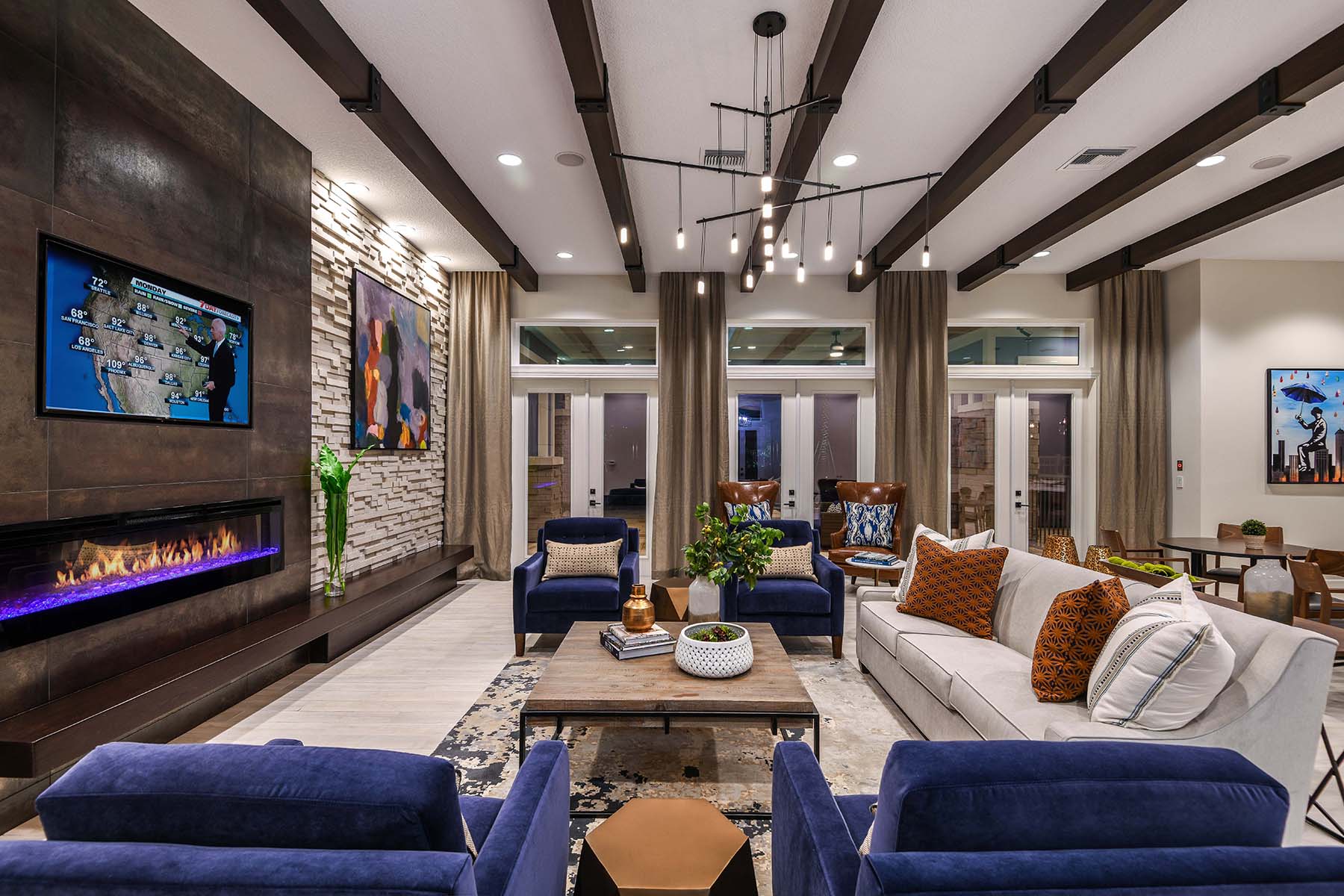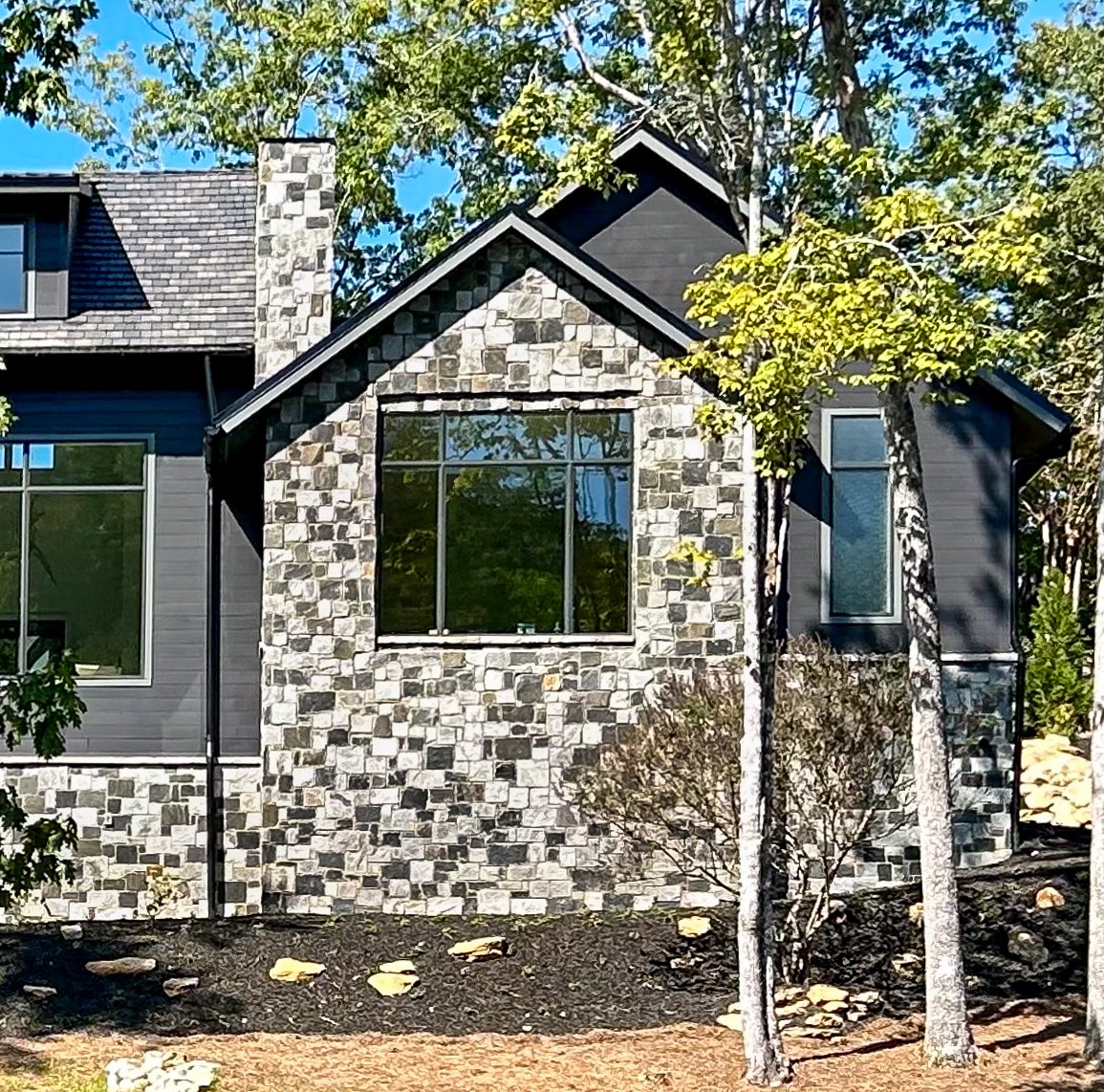October 16, 2023
The Art of Selecting the Right Stone for Your Home
Whether the stone is real or cultured, adding it to an elevation is a very popular way to enhance the exterior of a home. There are a variety of architectural styles that can be enhanced with stone, including, but not limited to: Craftsman, French Country, English Country, Shingle Style, Tuscan, Prairies Style, and Modern Farmhouse – just to name a few. But there are nuances in selecting the right stone for each style – and trust me, things can go awry quickly!
Unlike other elevation enhancements, stone selection comes with a multitude of profiles, colors, and textures.
Profile
Let’s start with the stone profile. Ledgestone has a rustic, horizontal stone profile. This horizontal profile pairs well with Craftsman and Prairie style architecture. The horizontal profile makes this stone ideal for smaller applications – say at the base of the foundation or below windows.
Cobblestone or cut cobblestone has the look of “rough-dressed stone” and features a chiseled face and rectangular shapes. This stone works best in large areas of stone on the front. This stone works well with French Country or English Country styles.
Fieldstone is a more rustic looking stone with random shapes and rugged profiles. Some say it looks like the jig-saw-puzzle of stone. I like this profile for Tuscan or English Country. It is also very impactful on entry walls and gateways.
In the cultured stone world, there are now a variety of very interesting modern profiles. The profile includes both clean lines and great projections to create shadows along the wall. Selecting the right stone profile goes a long way to creating the vibe appropriate for the style of the home.
Color & Color Variation
Let’s talk about the color of the stone. You typically want to stay in the same color family as the rest of the home. If you have warm tones, select a stone with a similar degree of warmth. But don’t forget color value. If your stone and body of the home have the same value – or color saturation, there won’t be as much contrast between the two materials, so the stone becomes a “why bother” – why bother spending the money on stone if you can’t even see it from the street?
If you’re creating color selections for an entire community, try to vary the color of the stone: some light stones and some darker ones. Consider both cool colors as well as warm. Cool gray stone looks amazing with a pop of red for the front door – but then, I think red looks great on every house.
Stone is not a uniformly colored material. The amount of color variation depends upon the stone. Make sure you select your stone from a large enough sample to get the full picture of the stone and the variation. I know I said earlier that you want to actually see the stone from the street – but heed this warning! Too much variation can end up looking like polka-dots – that’s when the added expense of the stone becomes a negative.
Selecting stone can seem like a daunting and frustrating task. I won’t lie, the process will take longer than any other selection. You cannot rely exclusively on the pictures from the manufacturer’s website. Be sure to get the actual sample so you can place the adjacent colors right on the sample for color compatibility. And if your supplier can give you addresses where the stone has been used, it might be a great field trip.
What are your favorite examples of houses with stone? Send me your best – and your worst!
Categorized in: Uncategorized
This post was written by Housing Design Matters


